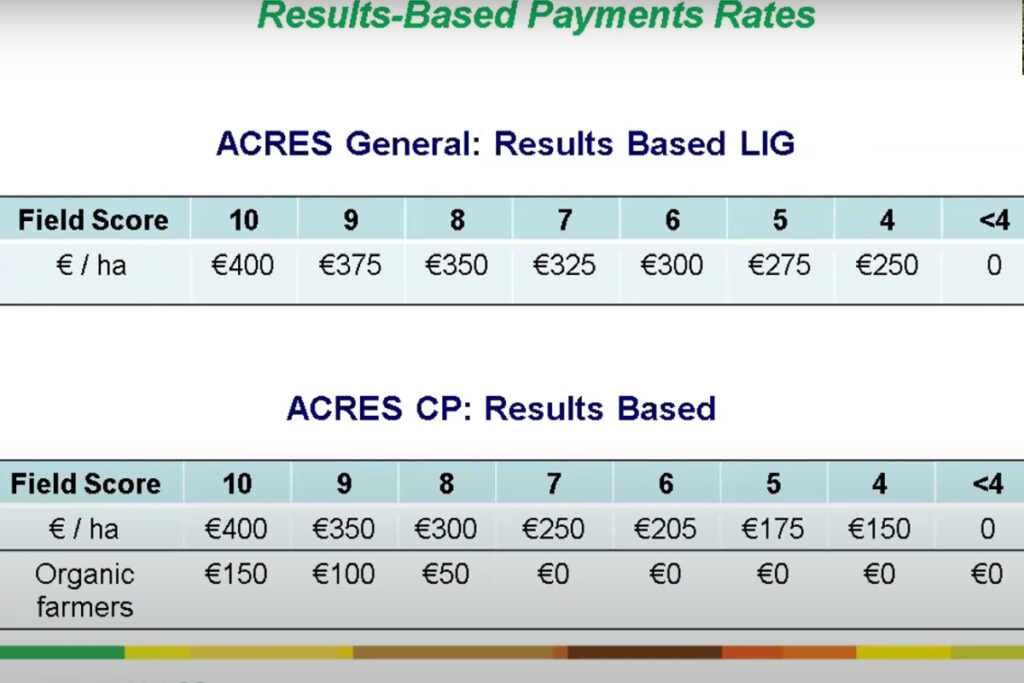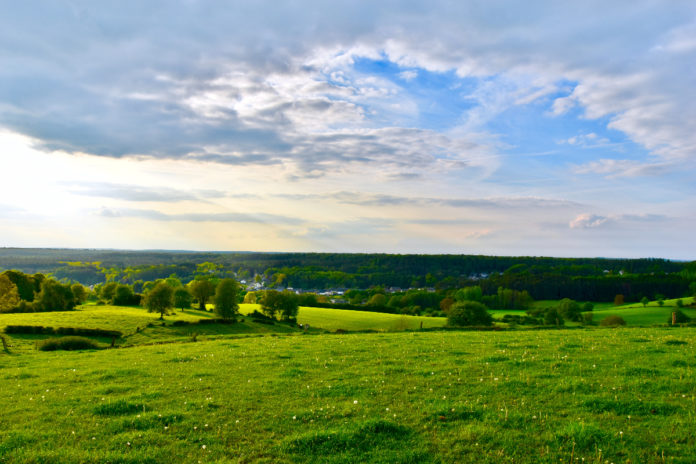Low-Input Grassland – LIG – in ACRES
Farmers with LIG – Low-Input Grassland – can draw down up to €400/ha plus an additional payment of €50/ha if they mow this ground in July or August under the new Agri-Climate Rural Environment Scheme (ACRES).
That is according to Tom Kelly, Teagasc advisor, who spoke about the measure, which involves extensively managing land to benefit nature, water quality and climate, during Teagasc Mayo’s recent webinar on ACRES and water quality.
LIP, he told viewers of the virtual information session, is a results-based measure with scores allocated by an agricultural advisor in years 1, 3 and 5 in June, July and August.
Scoring fields
The payment the DAFM issues to a farmer applicant equates to the score they have received, subject to the maximum rates outlined above and a maximum inclusion of 10ha.
Kelly told viewers of the virtual event: “There are no rules as such, but if you want to score highly and well, you need to reduce the nutrient input on those fields. Low inputs of chemical and organic fertiliser are required.”
“In terms of grazing management, if we come out to score the fields and they have been grazed severely or down very low or have been cut for hay or silage, the field is going to score very poorly.”
“Also, the cover of ryegrass must be low, at less than 30%, in those fields.”
“If farmers are thinking about cutting for hay or silage, contact your planner and wait until they score the fields before you do any work in that regard, or your score will be very poor,” he added.
Kelly told viewers that results-based agricultural schemes have been working “well” through other initiatives, including the ‘BurrenLIFE project’, Hen Harrier Project and the Pearl Mussel Project, where farmers are incentivised to improve their score over time.
He explained: “What we have seen, in general, in a lot of cases where we go out for the first year or two, the field score might be at 4 or a 5.”
“However, time, if the farmer manages the field correctly and reduces nutrients, they may bring up the field score to an 8 or a 9. So, we would expect very few fields to score a ten out of ten, for example.”
CP teams and scorecards
Payments in CP areas will be all results-based, a process which will see various CP teams set scorecards, for various entities, including grassland, peatlands or woodlands, for example.
Just like under ACRES General, planners or advisors will walk farms and score accordingly against these scorecards.
He stated that some commonages have been scored previously for other measures such as the Wild Atlantic LIFE IP, where farmers have received a results-based payment.
Kelly continued: “Again, we are told this [scoring fields] will all happen in the months of June, July and August, and the CP teams themselves will all walk and score commonages.”
“The one thing to point out with any of them results-based scheme is that if you score less than 4, you get no payment, whether it is ACRES General or ACRES CP.”
“That is a worry for farmers in a CP zone, who may have signed up, are near high-priority water catchments, and may have improved grassland.”
“We may go out to score that grassland, and it may score very poorly.”
“But, we would expect most people in the CP zones to be scoring in the 6 ,7 and 8s, and they will receive a decent payment of between €205-€300/ha.”
“The idea is that the score and payment can improve over time. A score of 10/10 gives a payment of €400/ha,” he concluded.

Previous farming news article on That’s Farming:





